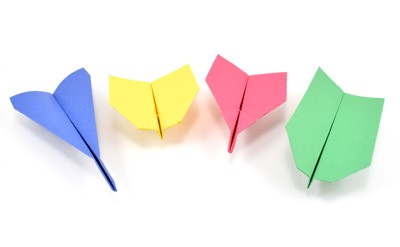Summary
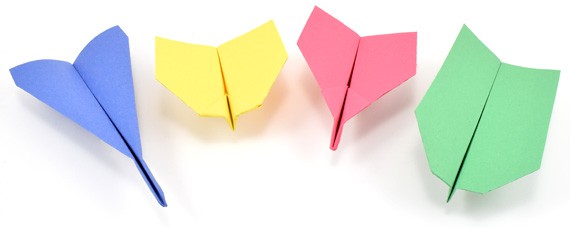 Image Credit: Ben Finio, Science Buddies / Science Buddies
Image Credit: Ben Finio, Science Buddies / Science Buddies
Overview
Are paper airplanes a nuisance in your classroom? They don't have to be! Those distractions can be a constructive learning opportunity: use them to teach your students about the engineering design process. In this fun lesson, you will be the "customer" ordering a paper airplane, and your student teams will be engineering companies that will manufacture planes. Before they start making planes, they need to define the criteria and constraints of this engineering problem.Learning Objectives
- Identify the criteria and constraints in a given engineering design problem.
- Explain why it is important to specify criteria and constraints for an engineering problem.
NGSS Alignment
This lesson helps students prepare for these Next Generation Science Standards Performance Expectations:- 3-5-ETS1-1. Define a simple design problem reflecting a need or a want that includes specified criteria for success and constraints on materials, time, or cost.
|
Science & Engineering Practices
Asking Questions and Defining Problems. Define a simple design problem that can be solved through the development of an object, tool, process, or system and includes several criteria for success and constraints on materials, time, or cost.
|
Disciplinary Core Ideas
ETS1.A: Defining and Delimiting Engineering Problems. Possible solutions to a problem are limited by available materials and resources (constraints). The success of a designed solution is determined by considering the desired features of a solution (criteria). Different proposals for solutions can be compared on the basis of how well each one meets the specified criteria for success or how well each takes the constraints into account.
|
Crosscutting Concepts
Influence of Science, Engineering, and Technology on Society and the Natural World. Engineers improve existing technologies or develop new ones to increase their benefits, decrease known risks, and meet societal demands.
|
Materials
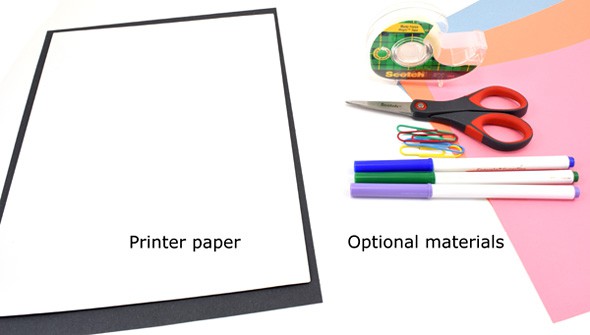 Image Credit: Ben Finio, Science Buddies / Science Buddies
Image Credit: Ben Finio, Science Buddies / Science Buddies
- Printer paper (at least 16 sheets per team). Optionally, you can let your students use colored construction paper instead.
- Additional, optional materials that can be useful for making paper airplanes. These materials are not required; you can decide what to use based on what you have available in your classroom.
- Scissors
- Rulers
- Tape
- Paper clips
- Colored markers
- Open, indoor space for throwing paper airplanes (at least the length of your classroom, with no furniture in the way). If you have students who are particularly good at making and throwing planes, you may need to move into a hallway or a large room like the gym or cafeteria.
- Tape measure. You can decide whether to use a metric or English tape measure depending on which units for distance your students are familiar with.
- Optional: calculator for calculating average distance
Disclaimer: Science Buddies participates in affiliate programs with Home Science Tools, Amazon.com, Carolina Biological, and Jameco Electronics. Proceeds from the affiliate programs help support Science Buddies, a 501(c)(3) public charity, and keep our resources free for everyone. Our top priority is student learning. If you have any comments (positive or negative) related to purchases you've made for science projects from recommendations on our site, please let us know. Write to us at scibuddy@sciencebuddies.org.
Background Information for Teachers
This section contains a quick review for teachers of the science and concepts covered in this lesson.You probably remember making paper airplanes as a kid, and some of your students might be obsessed with making them now. While they might seem like a waste of paper or a distraction in your classroom, paper airplanes are an excellent way to teach your students about the engineering design process. You might think of the engineering design process as primarily about designing, iterating, and testing multiple prototypes of some device or machine. However, before you even start to design, you need to define the problem you are trying to solve, the criteria for success, and the constraints you face when solving the problem. Otherwise, you might design something that "works," but find out that it does not meet some specific goals, is too expensive, requires materials that are not readily available, etc. To avoid wasted effort, it is very important to sort those things out beforehand! If you are unfamiliar with the engineering design process, check out the links in the Additional Background section to learn more.
Think about real planes for a minute. They come in all shapes and sizes (Figure 1), and serve very different purposes. Before they can begin to design these planes, engineers have to define the problem they are trying to solve and the criteria/constraints they have to work with. For example, who is the customer for the plane? What will the plane be used for? How fast does the plane need to go? Why does this problem require a new type of plane? What is the budget and what materials are available to build it? The answers to those questions lead engineers to design very different planes. For example, look at Figure 1 and imagine what the customer for the plane might have wanted in each scenario (a big plane that can carry a lot of passengers and their luggage; a fast, agile plane that can shoot down other planes; and a tiny plane for just a few passengers).
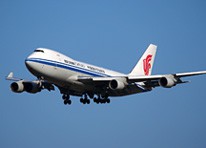 Image Credit: Wikimedia / Public domain
Image Credit: Wikimedia / Public domain
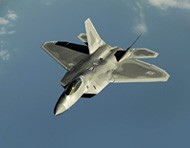 Image Credit
Image Credit
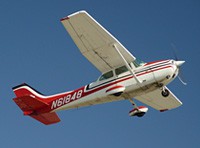 Image Credit: Wikimedia / Public domain
Image Credit: Wikimedia / Public domain
Figure 1. Three different types of planes. From left to right: a large passenger plane (Boeing 747), a fighter jet (Lockheed Martin F-22 Raptor), and a single-engine passenger plane (Cessna 172).
In this lesson plan, you will be the "customer" who wants to purchase a paper airplane. Your students will form teams of "engineers" that will design and build paper airplanes. Before they start building anything, they need to first define the engineering problem that they will solve. What does the customer want the airplane to do (for example, the plane that can fly the farthest)? What constraints do they have to work with (for example, what materials are available, and how much time do they have)? How will they determine if their plane is "successful" and meets all criteria? While your students will still build and test planes, this lesson will focus primarily on these beginning stages of the engineering design process. See the variations section for ideas about how you can include other steps of the process in more detail.

